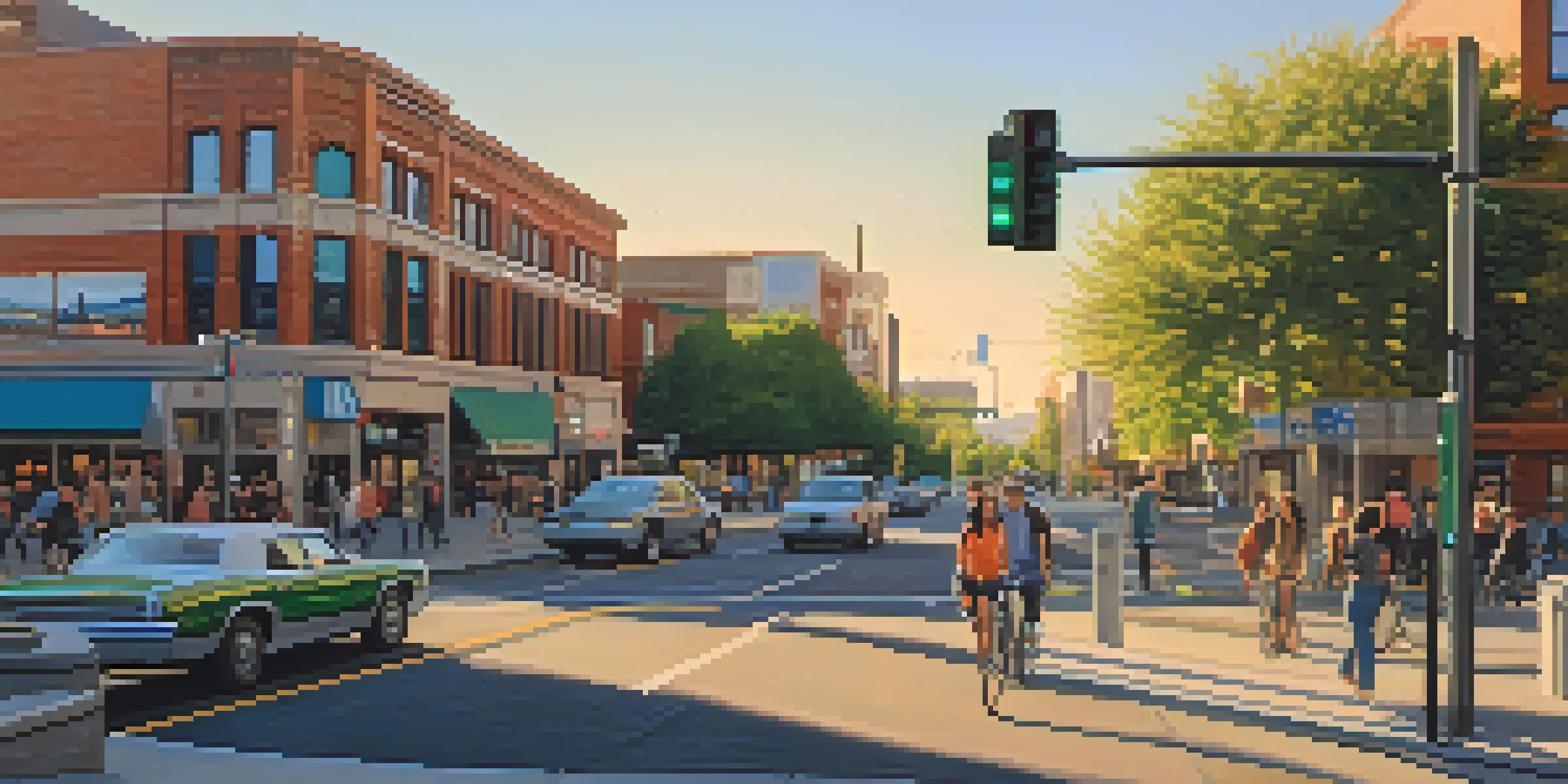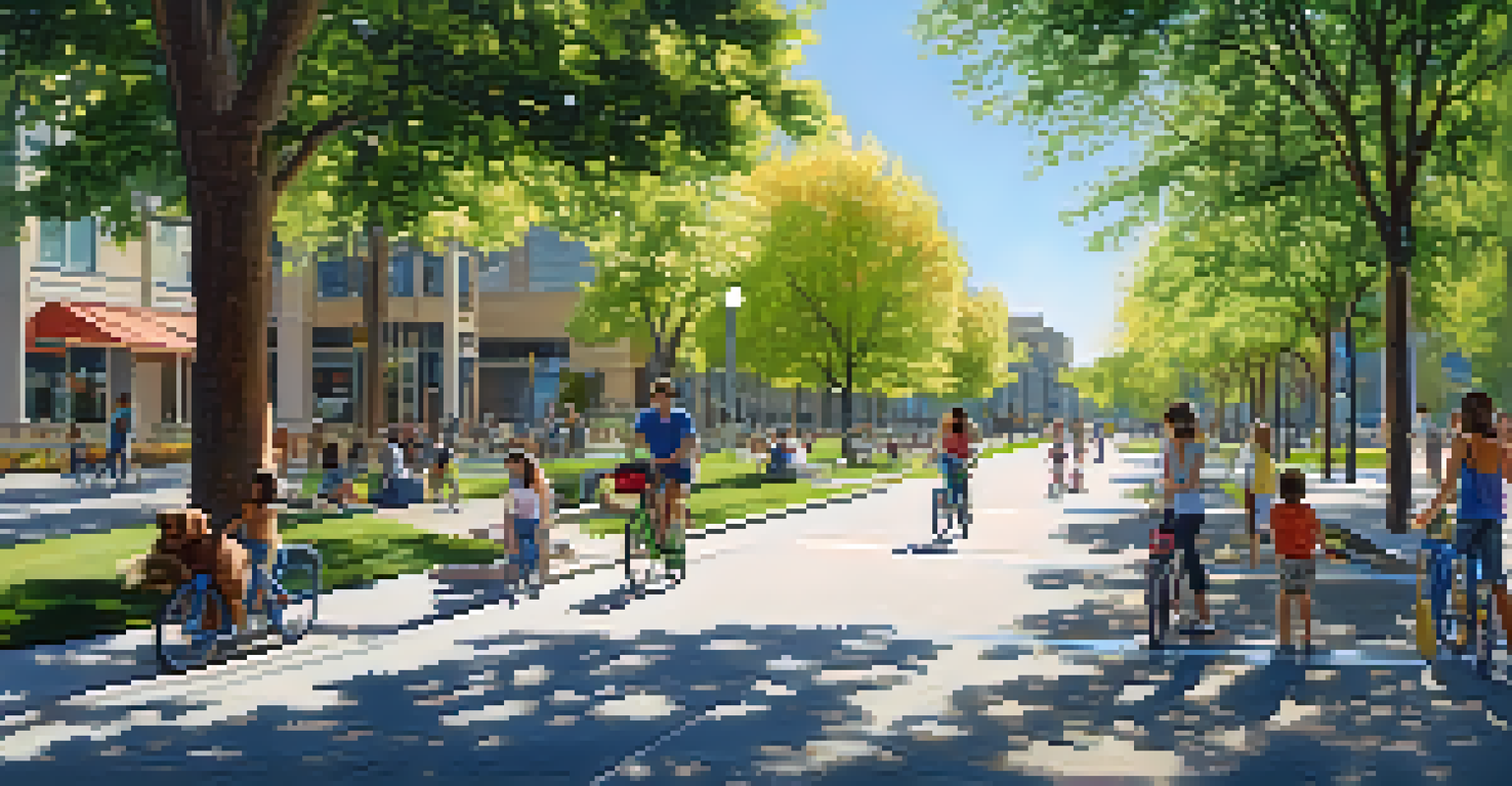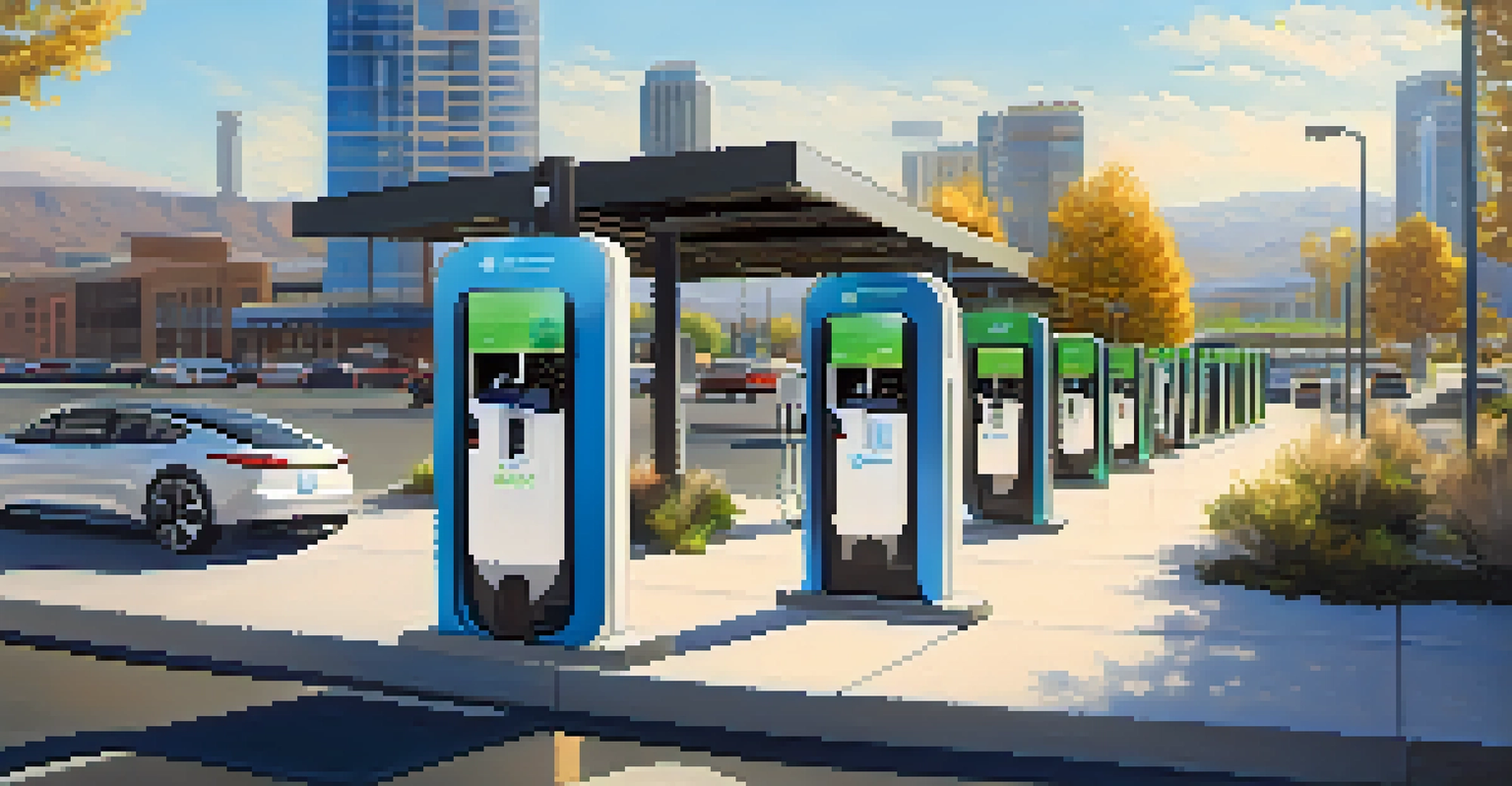Future of Transportation: Innovations in Reno's Infrastructure

Reno's Vision for Smart Transportation Solutions
Reno is setting its sights on a future where transportation is not just functional but smart. With the rise of technology, the city is exploring ways to integrate digital solutions into its infrastructure. This means using data to optimize traffic flow, reduce congestion, and enhance the overall commuting experience. Imagine a city where traffic lights adjust in real-time based on vehicle movement—this is the vision for Reno's smart transportation.
The future of transportation is not about cars; it's about creating a system that works for everyone, including pedestrians and cyclists.
One exciting aspect of this vision is the implementation of intelligent transportation systems (ITS). These systems collect and analyze data to improve traffic management and safety. For instance, sensors placed along roads can detect traffic patterns and provide real-time updates to commuters, allowing them to choose the quickest routes. This proactive approach not only benefits drivers but also contributes to reducing emissions and improving air quality.
Moreover, Reno's focus on smart solutions aligns with broader sustainability goals. By embracing innovative technologies, the city aims to create a more efficient transportation network that supports its growing population. As Reno continues to evolve, the integration of smart transportation solutions will play a crucial role in shaping a more connected and livable city.
The Rise of Electric and Autonomous Vehicles
Electric and autonomous vehicles (EVs and AVs) are becoming more than just a trend in Reno; they are part of the city's transportation future. With growing concerns about climate change, Reno is encouraging the adoption of electric vehicles through incentives and infrastructure support. Charging stations are popping up across the city, making it easier for residents to switch to greener alternatives.

In addition to EVs, autonomous vehicles are set to revolutionize how we think about transportation. Companies are testing self-driving cars that promise to enhance safety and efficiency on the roads. Imagine hopping into a car that drives you to your destination without the need for human intervention—this is quickly becoming a reality in Reno. The city is working with tech firms to create a regulatory framework that will facilitate safe AV deployment.
Reno Embraces Smart Transportation
The city is integrating technology to enhance traffic flow and improve the commuting experience for residents.
The combination of EVs and AVs could lead to a dramatic reduction in traffic accidents and emissions. As Reno embraces these technologies, residents can expect a shift toward cleaner, more efficient travel options. With the right infrastructure and support, the city is paving the way for a transportation revolution that prioritizes sustainability and safety.
Public Transportation: Innovations and Improvements
Reno's public transportation system is undergoing significant improvements to meet the needs of its residents. The city is investing in modernizing bus services, enhancing routes, and increasing the frequency of transit options. These changes aim to make public transport a more attractive alternative to driving, especially for those looking to reduce their carbon footprint.
Sustainability is no longer about doing less harm. It's about doing more good.
Innovative technologies, such as mobile apps for real-time tracking, are also being introduced. Commuters can now plan their trips more efficiently by knowing exactly when their bus will arrive. This level of convenience encourages more people to utilize public transport, which ultimately helps to decrease traffic congestion in the city. Public transportation is not just about getting from point A to point B; it's about making the journey enjoyable and accessible.
Furthermore, Reno is exploring partnerships with ridesharing services to create a seamless transportation network. By integrating these services with public transport, the city aims to provide residents with a comprehensive mobility solution. This collaborative approach paves the way for a future where public transportation doesn't just serve a purpose but is a preferred choice for daily commuting.
Bicycle and Pedestrian Infrastructure Enhancements
As part of Reno's commitment to sustainable transportation, the city is making significant investments in bicycle and pedestrian infrastructure. New bike lanes are being developed, and existing paths are being upgraded to create a safer and more enjoyable experience for cyclists. This shift encourages residents to consider biking as a viable alternative to driving, promoting a healthier lifestyle.
Moreover, the city is enhancing pedestrian pathways to ensure that walking is a safe and appealing option. Wider sidewalks, improved crosswalks, and more green spaces are all part of the plan. By prioritizing pedestrian access, Reno aims to create a more walkable environment that fosters community interaction and reduces reliance on cars.
Rise of Electric and Autonomous Vehicles
Reno is promoting electric and autonomous vehicles as key components of a sustainable transportation future.
These improvements not only enhance mobility but also contribute to the overall quality of life in Reno. A city that prioritizes biking and walking is one that values health, sustainability, and community. As these infrastructure enhancements take shape, residents will enjoy a more connected and vibrant urban experience.
Integrating Renewable Energy into Transportation
The future of transportation in Reno is closely tied to the integration of renewable energy sources. As the city moves towards a more sustainable approach, there is a strong focus on powering transportation systems with clean energy. This includes utilizing solar panels to charge electric vehicle infrastructure and public transportation fleets.
Reno is also exploring partnerships with local energy providers to create a more resilient and sustainable energy grid. By harnessing renewable energy, the city can reduce its carbon footprint and promote energy independence. This commitment to clean energy not only benefits the environment but also supports local jobs in the renewable sector.
Furthermore, the integration of renewable energy into transportation systems aligns with national and global sustainability goals. As Reno continues to innovate, the city is setting an example for others to follow. A transportation network powered by renewable energy will not only enhance the city’s appeal but also contribute to a healthier planet for future generations.
Community Engagement in Transportation Planning
Community engagement is a crucial component of Reno's transportation planning process. The city actively seeks input from residents to understand their needs and preferences when it comes to transportation. Through surveys, public forums, and workshops, Reno is fostering a collaborative environment where citizens can voice their opinions and contribute ideas.
This approach not only empowers residents but also ensures that the transportation solutions developed are relevant and effective. For instance, feedback from the community has led to the prioritization of bike lanes and pedestrian pathways, reflecting the desire for more sustainable options. Engaging the public in the decision-making process builds trust and encourages a sense of ownership over local infrastructure.
Community Engagement Drives Planning
Active community involvement ensures that transportation solutions reflect the needs and preferences of Reno's residents.
Moreover, as transportation technology evolves, ongoing community engagement will be essential. The needs of residents may shift with the introduction of new technologies and services, making it vital to adapt plans accordingly. By prioritizing community involvement, Reno is creating a transportation system that truly reflects the values and aspirations of its residents.
The Role of Policy in Shaping Transportation's Future
Policy plays a vital role in shaping the future of transportation in Reno. Local government initiatives and regulations can either facilitate or hinder the adoption of innovative transportation solutions. As the city looks to implement new technologies and infrastructure, supportive policies are essential to ensure successful outcomes.
For example, zoning laws that promote mixed-use development can encourage walkable neighborhoods and reduce dependency on vehicles. Additionally, policies that support the installation of electric vehicle charging stations can help accelerate the transition to greener transportation options. By aligning policy with sustainability goals, Reno can create a more cohesive and effective transportation strategy.

Moreover, collaboration with state and federal agencies will be crucial in securing funding and resources for transportation projects. By advocating for policies that prioritize sustainable transportation, Reno can position itself as a leader in innovation. The future of transportation in Reno hinges on effective policy-making that embraces change and supports the needs of its growing community.